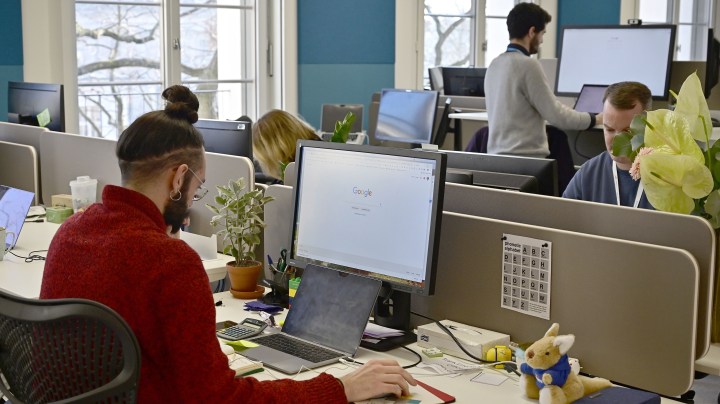
Will the 2020s bring an end to the era of open offices?
Will the 2020s bring an end to the era of open offices?

Democratic presidential candidate Michael Bloomberg has set the internet ablaze with a tweet — not about health care policy or impeachment, but office design. The billionaire latecomer to the race said as president, he would turn the East Room of the White House into an open office where he would sit right in the middle of his staff. Cue the howls from workers fed up with this trend for wall-less work spaces.
If the first decade of the millennium ushered in the idea of open offices, the last decade is when they went mainstream, with companies of all stripes tearing down cubicles and walls, putting workers in airy open spaces with long communal tables for desks, like a big dinner party of creativity.
But the hub of activity such design created was more of a nightmare to Kathryn Zimmerman, a programmer in Springfield, Virginia: “People laughing very loudly, playing music, on the phone — constant distraction,” she said, echoing the complaints of a majority of workers who said they hate open offices in a 2018 survey from Bospar PR.
A growing body of research demonstrates the negative effects of open offices, from a decrease in productivity and, surprisingly, communication, to an increase in sick days off. So will the next decade bring an end to open office madness?
“I don’t think any one extreme is the right solution,” said Karen Dillon, author of “The Harvard Business Review Guide to Office Politics.” “I think the combination is really important.” She said the cost-saving benefits of open offices mean they’re probably here to stay, but they could be evolving.
Interior designer Mindy O’Gara, with commercial flooring firm Interface, sees more workplaces adding private spaces like small conference rooms, secluded corners and phone booths.
“It’s designing space that fits the various iterations of work,” she said. “Yes, you’ve got these beautiful open spaces, but you also have this ability to pull off and be alone.”
When that’s not an option, Dillon said there are minor changes workplaces can make to better foster concentration: “piping white noise in so it mutes the sound, putting sound barriers wherever possible. I don’t think you ever want to create a workforce where they can only do their best thinking off-site.”
There’s a lot happening in the world. Through it all, Marketplace is here for you.
You rely on Marketplace to break down the world’s events and tell you how it affects you in a fact-based, approachable way. We rely on your financial support to keep making that possible.
Your donation today powers the independent journalism that you rely on. For just $5/month, you can help sustain Marketplace so we can keep reporting on the things that matter to you.


















